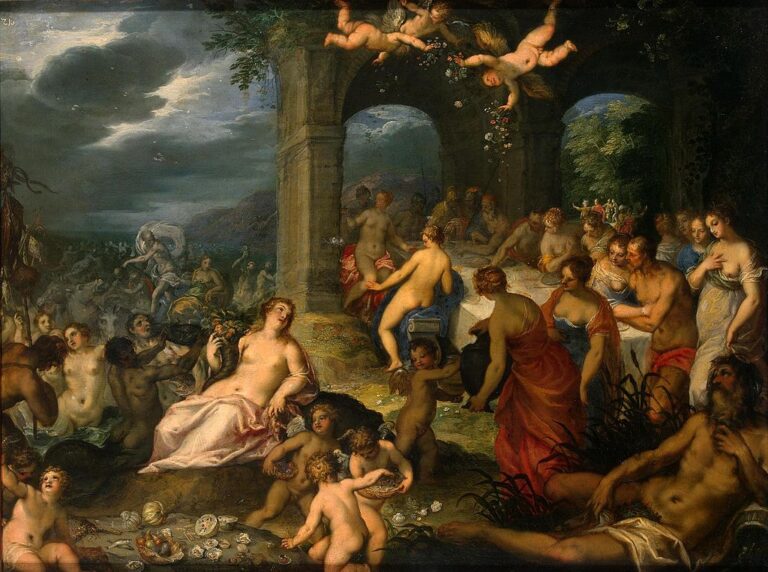Delusion and Reality in Earthlings

Sayaka Murata broke into the Western literary scene when her acclaimed novel Convenience Store Woman was published in 2018, in translation by Ginny Tapley Takemori, after winning the prestigious Akutagawa Prize in 2016. Murata’s work was praised for its exploration of the pressures that women, particularly single women, face in societies where gender roles are very strictly defined. Her latest novel to be translated into English, Earthlings (also translated by Tapley Takemori), published in 2020, explores similar themes while introducing the theme of trauma and the ways that individuals try to move through a world that, ultimately, doesn’t make sense.
One striking element of Murata’s novels is her choice of protagonist. Like Keiko, the protagonist of Convenience Store Woman, Natsuki in Earthlings doesn’t accept the rules of the world she lives in, even as those around her follow social codes without question and fervently encourage her to do the same. Both characters frequently make note of their observations about the ways in which those around them seemingly fall into socially-dictated patterns of behavior without a second thought. In Earthlings, for example, Natsuki often compares society to a factory. She says, “My town is a factory for the production of human babies. People live in nests packed closely together . . . The nests are lined up neatly in rows, and each contains a breeding pair of male and female humans and their babies. The breeding pairs raise their young inside their nests. I live in one of these nests too.” Babies eventually grow and pair up into their own breeding pairs, creating new nests, extending this factory into eternity and rendering people tools for greater society.
As Earthlings moves from Natsuki’s childhood to adolescence to, eventually, adulthood, this image of society-as-factory remains. And in each stage of her life, Natsuki consistently sees herself as unable to assimilate into this world. From the beginning of the novel, readers are presented with a key aspect of how Natsuki sees herself in contrast to the factory: she is a magician with a small hedgehog stuffed animal, named Piyyut, and she comes from a planet called Popinpobopia. She confides in her male cousin, Yuu, who tells her that he is also an alien and that the two of them don’t fit easily into society because they aren’t from earth. While at their grandparent’s home for the Obon festival, Natsuki explains to Yuu: Piyuut “looked like a white hedgehog plush toy, but actually he was an emissary sent by the Magic Police on the Planet Popinpobopia. Piyyut had given me the magic wand and mirror to help me use my magical powers.” The two bond over these discussions, each accepting and affirming the other’s story while keeping their secrets from the rest of the family. Eventually, more romantic feelings arise and the two agree to a secret three-part marriage pledge, with the third element of the pledge being the most poignant and important: survive, no matter what.
This phrase becomes a mantra for Natsuki as she grows up and tries to integrate into the “human” world of the factory when scandal pulls her and Yuu apart. The belief that she is different from other Earthlings only strengthens as she ages; the realization that there is a reason for her struggle to integrate into society is a source of relief to her.
By now, readers may be curious about whether or not Piyyut, Planet Popinpobopia, or Natsuki’s alleged magical abilities are actually real. Throughout the novel, characters quickly dismiss much of Natsuki’s story—even Yuu eventually dismisses their shared alien identity as the two grow older. Instead, those around Natsuki try to get her to also “grow out of” these ideas by getting married and having a child. It is tempting, as readers, to dismiss these claims that began in her childhood as fantasy.
Rather than providing a clear-cut answer for the reality of Piyyut or Popinpobopia, however, Murata uses them to address larger questions about how society responds to those who deviate from expected norms—including when those who deviate do so in the face of traumatic situations. During the course of the novel, Natsuki is groomed and repeatedly sexually assaulted by a teacher in her cram school. As is the case in many similar situations, Natsuki’s attempts to express what happened to her are rejected unilaterally by friends and family members. Natsuki doubling down on her Popinpobopian identity in her adolescence, at a time when even her cousin expresses doubt about their childhood beliefs, can therefore easily be read as a response to trauma. But Murata problematizes this by consistently contrasting Natsuki’s ideas about Popinpobopia with her concept of society as a factory, and with the ideas her family espouse.
There is no stable ground within the way characters respond to difficult situations; while her family tends to frame Natsuki’s behavior as particularly over-the-top, there are no characters in the book who respond in a rational way to their own situations, either. Readers instead encounter scene after scene in which characters doggedly stick to their own “delusions,” often using Natsuki as a means of avoiding questioning their own understanding of the world or of themselves.
Natsuki’s sister, Kise, for example, is described as “one of those who, upon becoming an adult, had achieved salvation in the Factory. As a child, she hadn’t been able to properly assimilate into society but had found redemption in becoming a tool of the Factor and had grown into its fervent devotee.” Kise’s life, from the outside, follows what is expected of her: she is a wife and a mother. Yet she is not described as being truly happy or content. Instead, she expends significant energy into forcing Natsuki to go along with societal expectation, even going so far as goading her by downplaying the assault. “Back when you were in cram school, the teacher fiddled with you, didn’t he?” she says. She describes how she was jealous that an adult would show sexual interest in Natsuki. On the surface, Kise is the sister who has been successful in living a life that aligns with social norms and Natsuki is the failure whose maladaptive, delusional ideas are holding her back. It comes to light, however, that Kise herself is deeply unhappy in her marriage and has recently gotten into trouble with her husband, who has discovered that Kise has been unfaithful multiple times. Her comments here bely a character who, as it turns out, is just as alien to the world of the factory as Natsuki is.
Rather than presenting Natsuki’s ideas as completely delusional in comparison to the other characters—who are supposed to represent those who are successful in the eyes of society—Murata demonstrates that the idea of Popinpobopia is no more delusional than the way others, like Natsuki’s sister, try to rationalize their way through the world. Thus, trying to pin down who is delusional and who is reacting reasonably in the novel is never productive. Instead, the focus should be on why the worldview that Natsuki creates is so troubling for her family when they themselves are uncritically following a set social narrative. What is it about Natsuki’s refusal to align herself with her family’s expectations that causes them to ignore the gaping holes in their own belief systems? Rather than making Natsuki the scapegoat of the story, Murata’s choice of surrealism creates the opportunity to highlight the discrepancies or irrationalities in the way all of the characters behave.
Natsuki’s refusal to buy into the worldview that those around her hold fast to allows for a complex look into how individuals situate themselves in a society that, for one reason or another, is hostile to them. Earthlings is much more surreal than Convenience Store Woman, and through that often uncomfortable surrealism, Murata manages to push further into themes that appeared in her previous novel. Like Keiko, Natsuki exposes the cracks in society by refusing to accept things as they are, even when others try to force them to blindly accept the status quo. For both Keiko and Natsuki, society, at its core, doesn’t make sense. Yet rather than positioning these two characters as problems that need fixing, Murata situates them within their narratives in such a way as to highlight how irrational and problematic societal expectations ultimately are.
This piece was originally published on February 24, 2021.


